Doing business
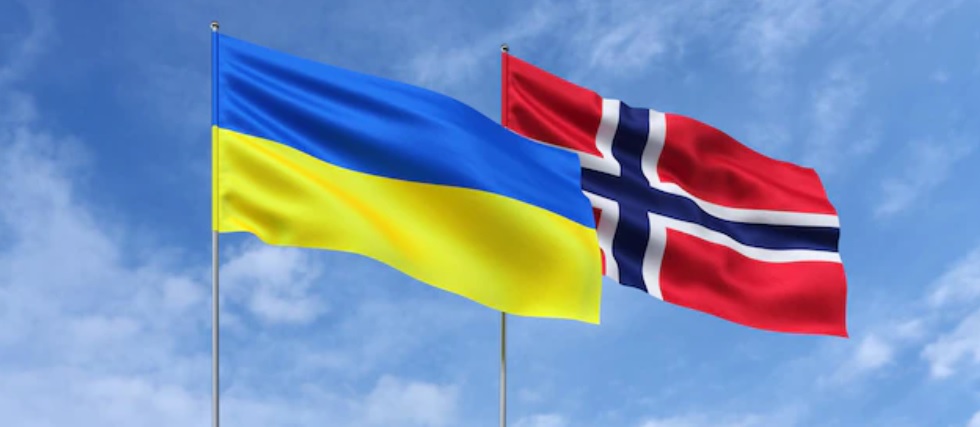
The Kingdom of Norway will support Ukraine as long as necessary. Norway provides military, humanitarian and civilian aid within the framework of the Ukraine Support Program. Last year, the country provided Ukraine with more than 10 billion crowns ($1 billion) in civilian and military aid.
The Government of Norway has made a $190 million grant to the World Bank’s Ukraine Support, Recovery, Reconstruction and Reform Trust Fund (URTF) to support the Government of Ukraine’s ability to provide services, including investments in the repair of damaged infrastructure. This is the second tranche of the URTF provided by Norway after a grant contribution of $100 million.
Norway increases its support for nuclear security in Ukraine in 2023. More than $9 million will be allocated to support IAEA employees working in Ukraine. This guarantees their presence at Ukrainian nuclear power plants: Chornobyl, Zaporizhzhya (occupied by the Russian Federation), and three other operating nuclear power plants in the country. At the same time, Norway is now strengthening cooperation with Ukraine in the field of nuclear security by $14 million. These funds will be managed by the Directorate of Radiation Protection and Nuclear Preparedness (DSA).
Norway has committed to providing $1.46 billion each year for the next five years from 2023 to 2027. In total, we are talking about $7.7 billion. Within the framework of this, in the current year, the Kingdom of Norway allocated $264 million to Ukraine for humanitarian needs, and $161 million will be directed to support the budgetary sphere and restore damaged infrastructure.
Ukraine is interested in military support, which is why Norway is increasing funding for this direction from 2.5 billion crowns ($240 million) to 10 billion crowns in 2023.
In general, as part of military aid, Norway transferred to Ukraine: 4,000 units of M72 anti-tank weapons, 1,500 body armor, 5,000 helmets, 15,000 field rations, 1,000 protective masks with filters, 2,000 sleeping bags, 10,000 sleeping mats and some clothing, as well as an air defense system and many other weapons. Norway also handed Ukraine eight Leopard 2 tanks, four auxiliary vehicles and allocates funds for ammunition for the Armed Forces.
Norway will provide Ukraine with eight long-range MLRS and three Arthur radars for artillery detection. The arms transfer will take place in cooperation with Great Britain.
The Norwegian government has agreed to transfer 1,000 new ultra-small Black Hornet unmanned aerial systems to Ukraine. Earlier, Great Britain and Norway jointly handed over a batch of micro-drones, the tranche of which was financed from the British fund of military aid to Ukraine in the amount of $9.1 million. This should preserve the personnel of the assault groups and speed up work during the liberation of houses and industrial zones.
The governments of Norway and Denmark agreed to cooperate to provide Ukraine with 8,000 artillery shells, with Oslo sending 155mm artillery shells. At the end of last year, Norway allocated NOK 150 million (over $15 million) to finance an EU training mission for the Ukrainian military.
In May 2023, volunteers from Norway Odd Steinar Renne, Morten Johan Brendbo and Joakim Sandodden visited Dnipropetrovsk Oblast. Benefactors handed over 3 powerful fire-rescue vehicles to the emergency services of the region. Since the beginning of the full-scale invasion, Norwegian partners have been actively supporting the units of the regional emergency services. The rescuers received a lot of humanitarian aid from benefactors – in particular, special firefighting equipment and cars, protective clothing and shoes, hydraulic equipment for eliminating the consequences of a transport accident, and motorized vehicles. For their help and support, Norwegian volunteers were awarded honorary degrees by the Dnipropetrovsk Regional Council. “In these difficult times, Ukraine has found real friends who help our country protect people, democracy and European civilization with real deeds. Many countries have stood by us, putting their shoulder to the ground,” noted Mykola Lukashuk.

During the current year, thanks to the cooperation of the Ministry of Social Policy with the Norwegian Council for Refugees using the “eHelp” platform, additional financial support in the amount of UAH 2,220 per month for three months will be provided to another 50,000 citizens of Ukraine. The Norwegian Refugee Council in Ukraine opened a legal aid center in the Dnipropetrovsk region. The center provides legal assistance on a number of issues related to obtaining IDP status, legal entities, ownership of land and housing, labor legislation, and access to public services.
The development of mutually beneficial trade and economic cooperation also remains an important priority of the two countries. The analysis of export and import operations of Dnipropetrovsk region with Norway demonstrates a high level of partnership relations, because the mentioned state is an important trade partner of the region.
According to the results of 2022, the volume of exports of goods from Dnipropetrovsk region amounted to $1.1 million. Among the goods that are in demand among Norwegian consumers are parts for railway locomotives, ships, plastics and polymer materials, ferrous metals, etc.
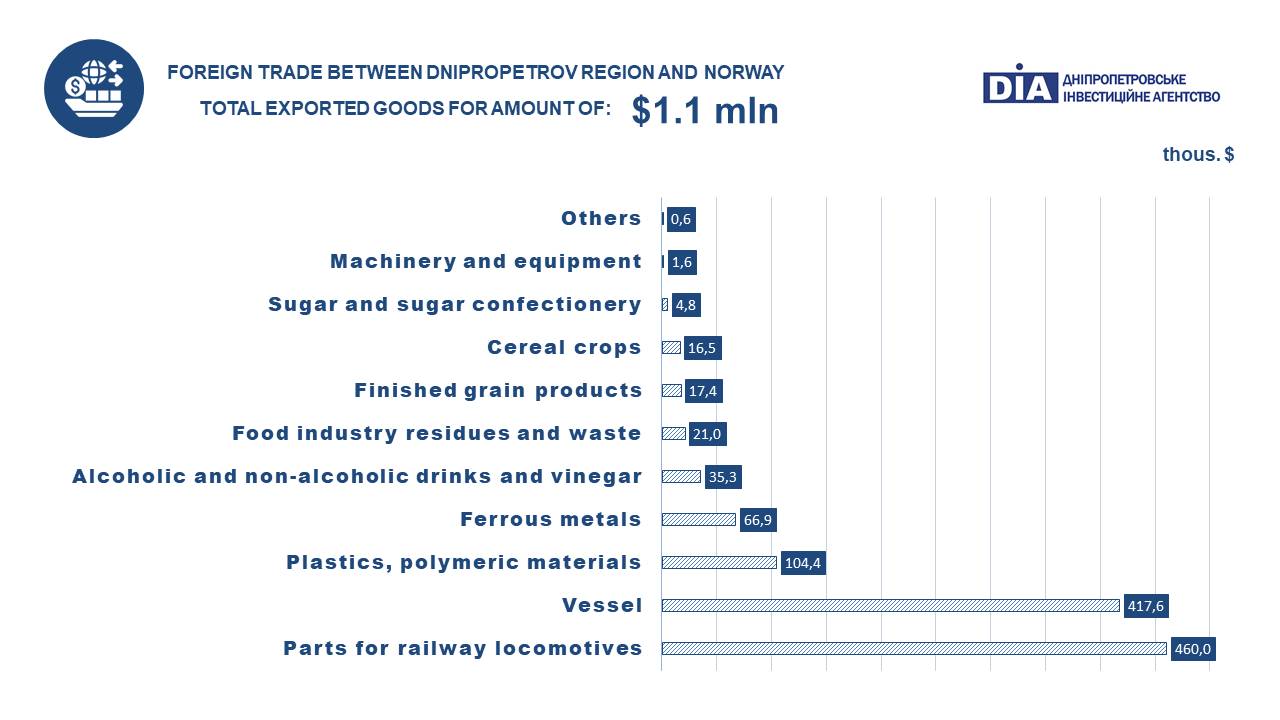
Export operations were carried out by 10 enterprises from Dnipropetrovsk region. The main exporting companies are enterprises of the metallurgical complex, machine-building, processing, and agricultural enterprises.
TOP-5 exporting enterprises (ranking by volume of export products):
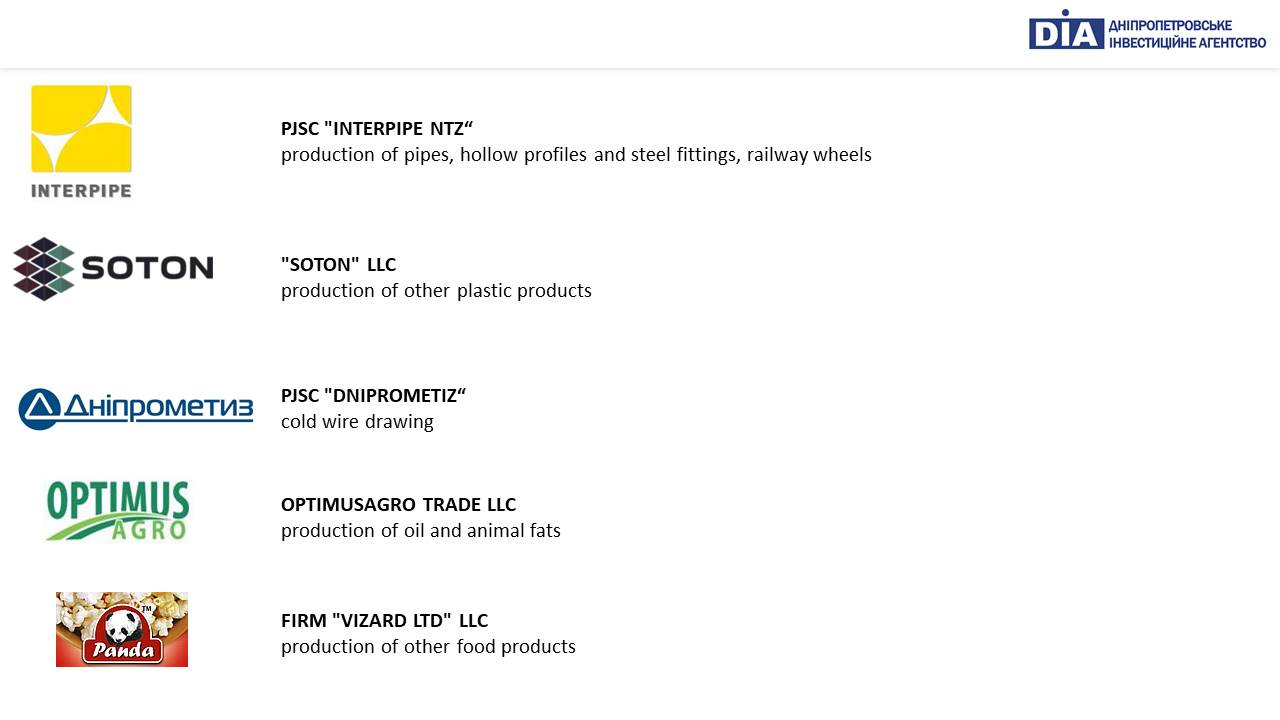
The import of goods from Norway to Dnipropetrovsk region amounted to $8.4 million and decreased by 36% compared to 2021. Dnipropetrovsk region traditionally bought: fish and products from it, machines and equipment, nickel and products from it, fertilizers and others.
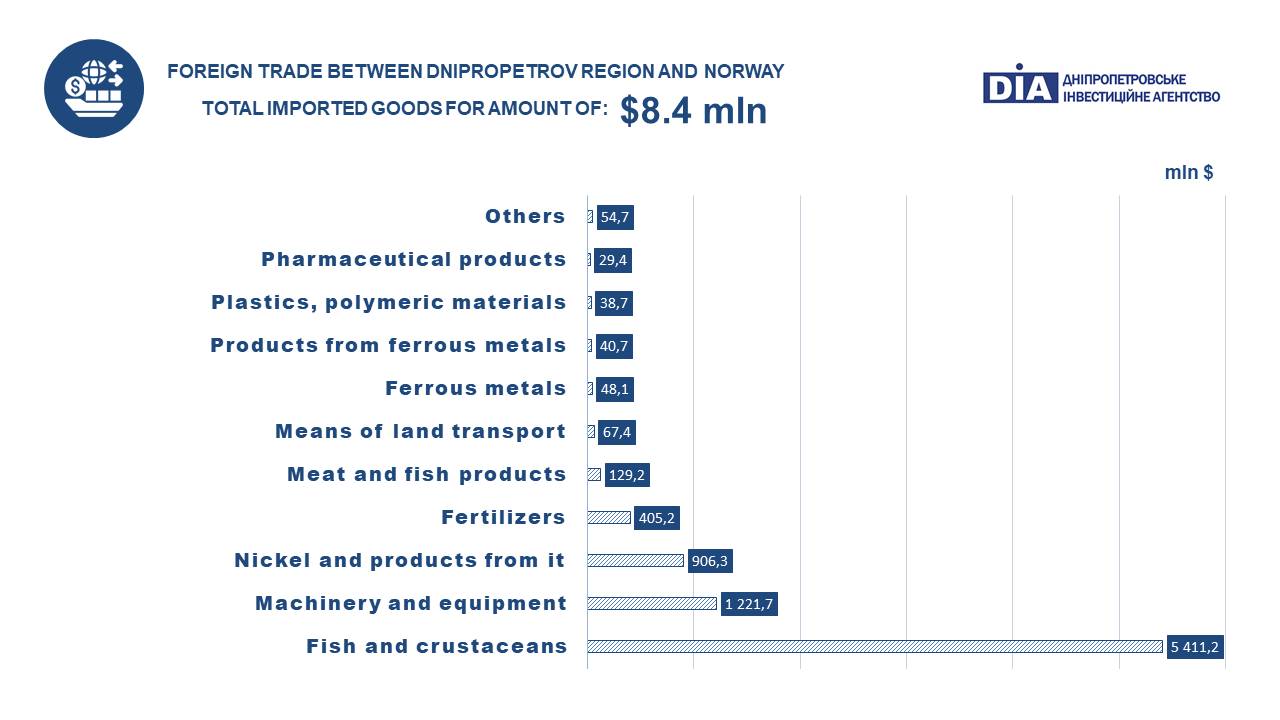
Import operations were carried out by 36 importer enterprises.
TOP-5 enterprises of importers (ranking by volume of imported products):
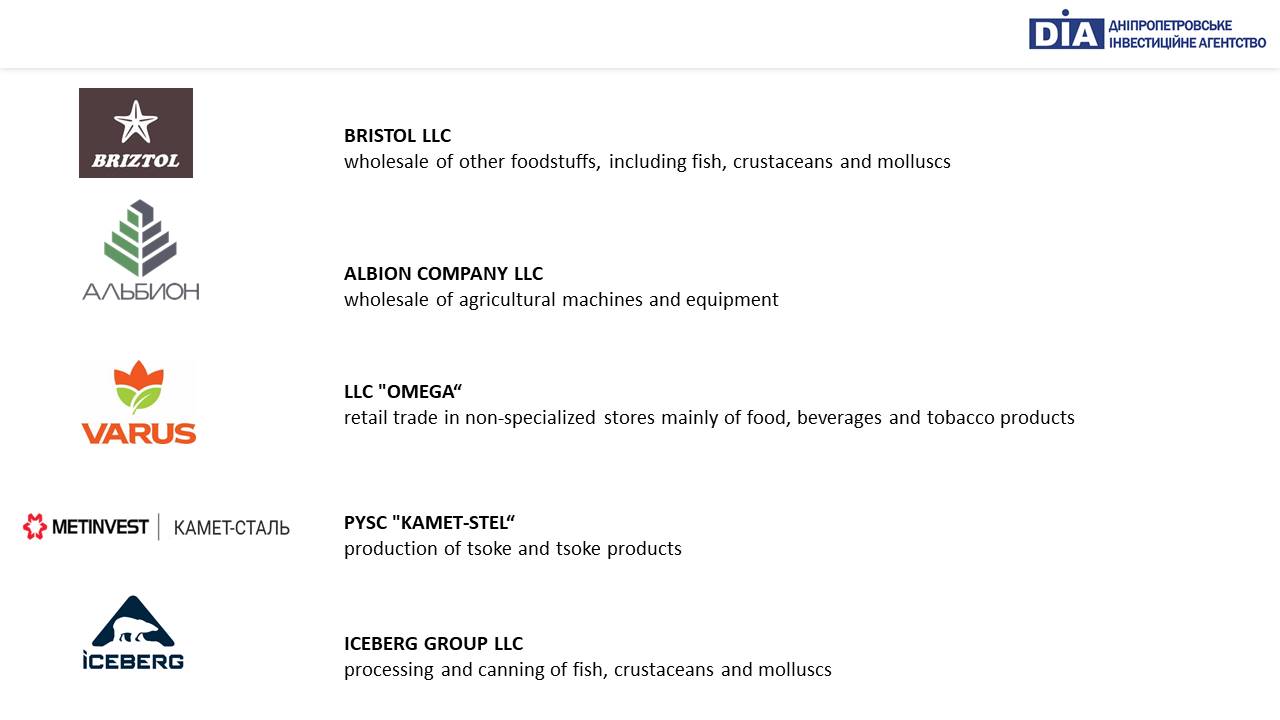
Import operations were mainly carried out by trade, processing and agricultural enterprises.
Source: information for the preparation of the article was taken from open online sources